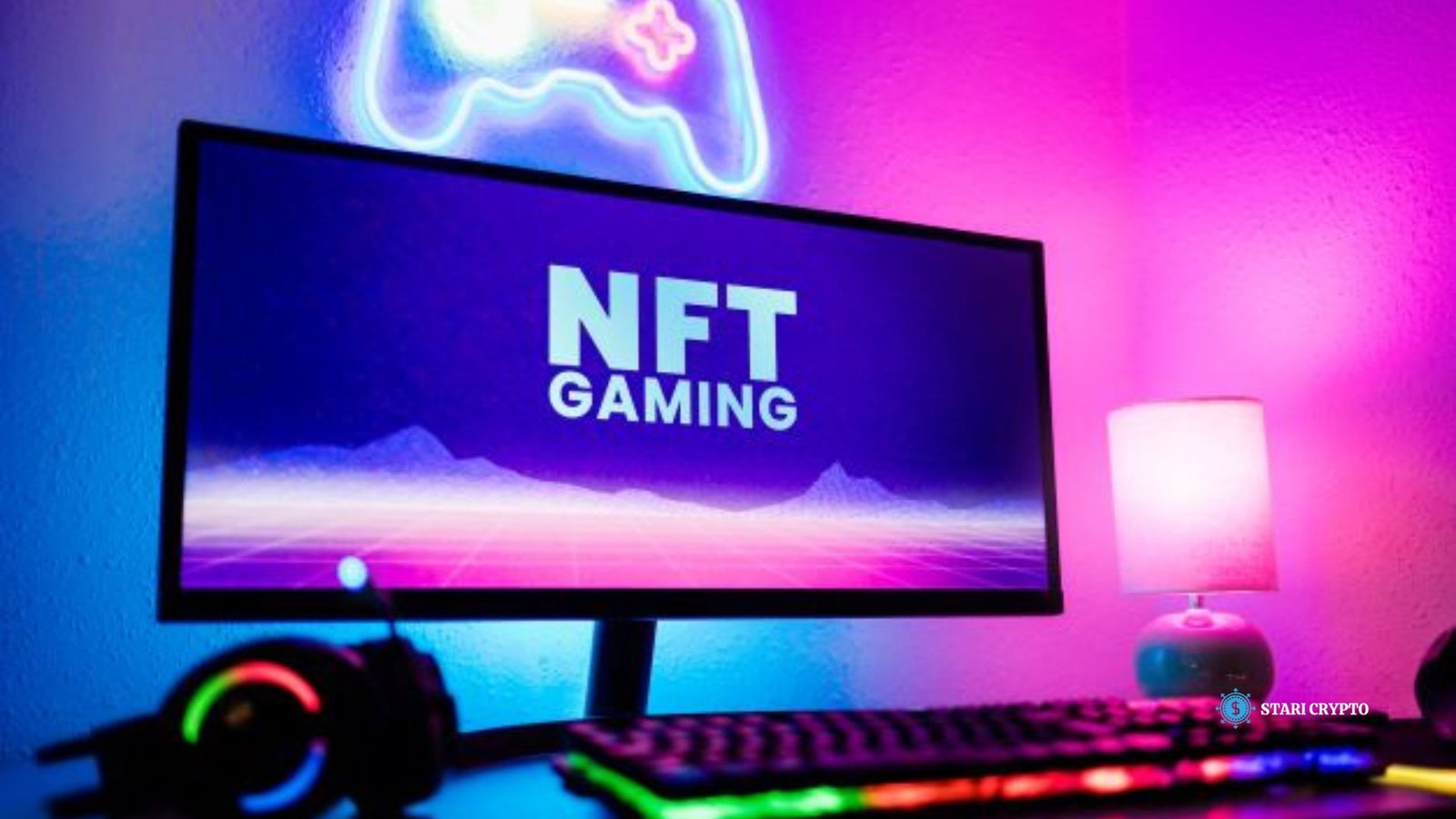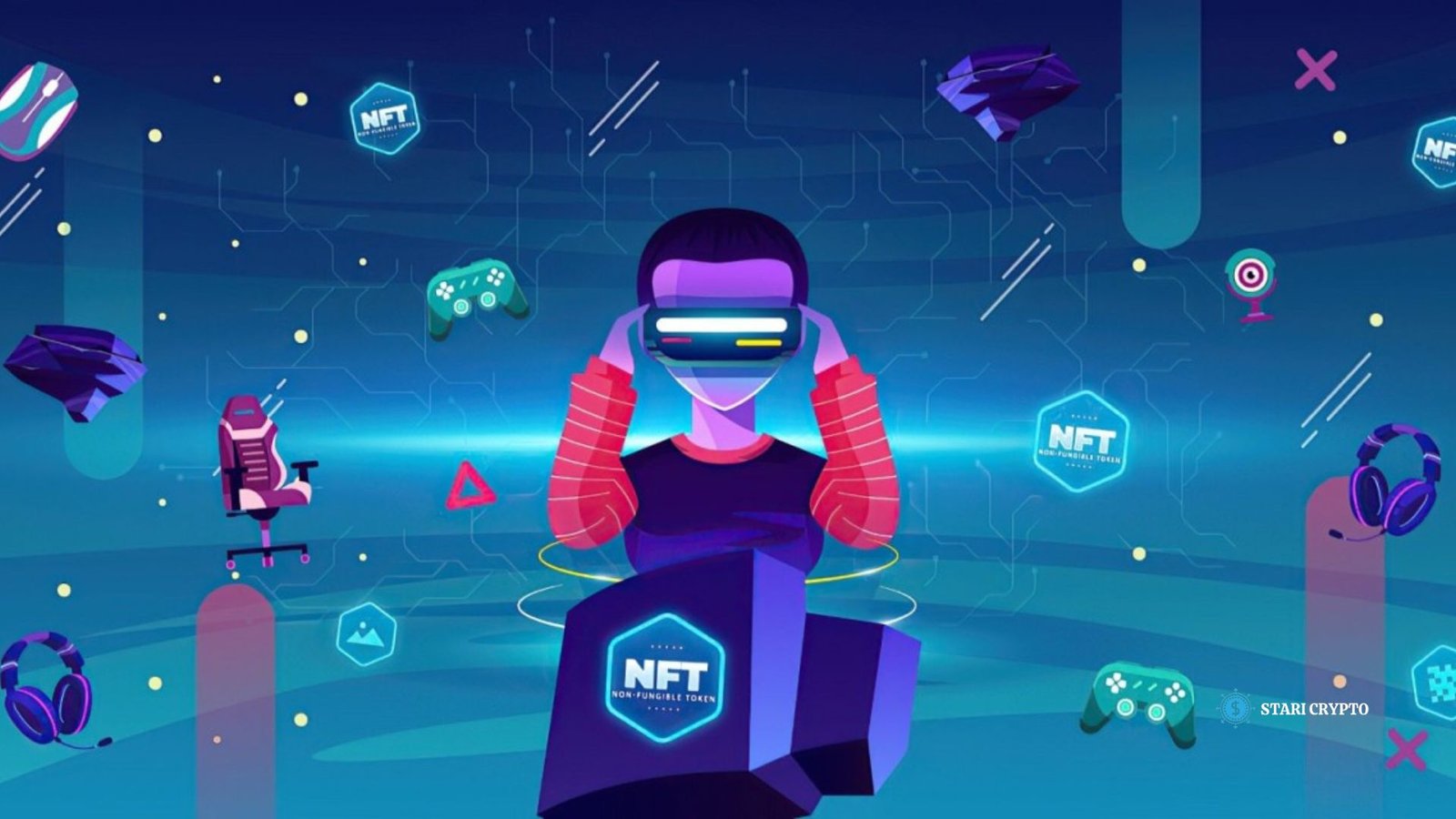Non-fungible tokens (NFTs) are quickly becoming popular in many fields. One area where they show the most promise is in the gaming business. NFTs are one-of-a-kind digital assets that are checked using blockchain technology. This lets people in the virtual world really own things and make them scarce. They could completely change how gamers interact with virtual items, giving them more control over their in-game items, opening up new ways to make money, and building a thriving market around gaming content. This article will talk about how NFTs are becoming more and more connected to the gaming industry, including the pros and cons and what the future may hold for both players and developers.
Understanding NFTs in Gaming
Before diving into how NFTs are changing gaming, it’s essential to understand what NFTs are. Unlike cryptocurrencies like Bitcoin or Ethereum, which are fungible (meaning each unit is the same as another), NFTs are unique and cannot be replaced by another identical item. Each NFT has its own distinct value, often tied to its scarcity, uniqueness, or utility within a certain environment, such as a game.
NFTs can represent a wide range of digital assets in the gaming industry. These include:
- In-game items: Weapons, skins, characters, and other digital assets that players can buy, sell, or trade.
- Virtual Land: Players can purchase and own parcels of virtual land in blockchain-based games, which can be developed, sold, or rented.
- Collectibles: Unique, rare, or limited-edition digital assets that hold value due to their scarcity or aesthetics.
- Play-to-earn Models: Some games incorporate NFTs into a play-to-earn system, allowing players to earn cryptocurrency or valuable NFTs through gameplay.
How NFTs are Revolutionizing Gaming
Integrating NFTs into gaming has created several key opportunities for players and game developers. Here are some of the primary ways NFTs are reshaping the gaming industry:

True Ownership and Interoperability
In traditional gaming, players can purchase in-game items, but they do not actually own these items. The game developer typically retains control, meaning players cannot freely trade, sell, or transfer their assets outside the game’s ecosystem. NFTs change this dynamic by allowing players to own their digital assets truly. Once an item is tokenized as an NFT on a blockchain, players can trade it, sell it on secondary markets, or use it in other compatible games.
This concept of interoperability is a game-changer. With NFTs, players can carry their assets across different games, platforms, or even virtual worlds. For instance, a sword earned in one game could potentially be used in another game within the same ecosystem. This feature offers players greater flexibility and creates new collaboration possibilities between game developers.
Play-to-Earn Economy
NFTs have also fueled the rise of the play-to-earn gaming model, where players can earn real-world value through gameplay. In NFT-powered games, players can receive rewards in the form of NFTs or cryptocurrency, which they can sell on marketplaces for real money. This model contrasts with traditional games, where players invest time and money without any financial return.
One notable example is Axie Infinity, an NFT-based game where players breed, battle, and trade creatures called Axies. The game allows players to earn cryptocurrency by participating in battles, completing quests, or selling Axies. Players have even turned this game into a full-time job in some parts of the world. The play-to-earn model has empowered gamers to derive real value from their skills and time invested in games.
Monetization for Game Developers
NFTs present new revenue opportunities for game developers. In addition to selling games or in-game assets, developers can mint limited-edition NFTs that hold significant value for collectors or create virtual economies within their games. Developers can also earn royalties every time an NFT is sold on secondary markets, allowing for continuous revenue generation.
Moreover, the scarcity element of NFTs can drive demand for exclusive content. Developers can create rare or one-of-a-kind items that become highly sought after by players and collectors. This has led to a shift in how games are monetized, offering both developers and players new ways to engage with and profit from gaming ecosystems.
Building Virtual Communities
NFTs are fostering the growth of tight-knit gaming communities where ownership and participation are key. In blockchain-based games, players can come together to form guilds, purchase land collectively, or participate in community-driven decision-making. These communities are often incentivized with NFTs or cryptocurrency rewards, creating a more engaging and immersive experience for players.
Additionally, many blockchain games incorporate decentralized governance systems, where NFT holders can vote on in-game changes, updates, or new content. This gives players a greater voice in shaping the future of their favorite games and fosters a sense of shared ownership within the community.
Challenges and Risks of NFTs in Gaming
While the rise of NFTs in gaming offers numerous benefits, it also comes with its share of challenges and risks. Some of the key concerns include:
Environmental Impact
One of the most significant criticisms of NFTs is their environmental impact. Most NFTs are minted on blockchain networks that use a consensus mechanism called Proof of Work (PoW), which consumes much energy. This has raised concerns about the environmental footprint of NFT transactions. However, there are efforts to address this issue, such as the transition of blockchain networks like Ethereum to more energy-efficient models like Proof of Stake (PoS).
Regulatory Uncertainty
The regulatory environment surrounding NFTs is still evolving. Governments worldwide are grappling with classifying and regulating NFTs, and different countries have taken varying approaches. Some see NFTs as collectibles, while others view them as securities or digital assets subject to taxation. This regulatory uncertainty can challenge players and developers, especially in cross-border transactions.
Speculation and Volatility
The NFT market is highly speculative, and the value of digital assets can be volatile. While some players may see significant financial gains, others risk losing money if the market for certain NFTs collapses. This speculation can also lead to overemphasizing profit-making rather than the intrinsic enjoyment of gaming, potentially skewing game design and player behavior.
Intellectual Property Concerns
The rise of NFTs has sparked debates over intellectual property (IP) rights, particularly regarding fan-created content or NFTs based on existing franchises. Developers need to establish clear guidelines and terms of service to protect their IP while allowing players to participate in NFT ecosystems.
The Future of NFTs in Gaming
Despite the challenges, the future of NFTs in gaming looks promising. The technology is still in its early stages, and as blockchain infrastructure improves, we can expect even more innovative applications of NFTs in gaming. Here are a few trends to watch for:

- Mainstream Adoption: As NFTs become more integrated into popular gaming platforms, we can expect broader adoption by both players and developers. Major gaming companies are already exploring incorporating NFTs into their ecosystems, and this trend is likely to continue.
- Cross-Game Economies: The concept of interoperable NFTs could lead to the creation of cross-game economies, where players can buy, sell, and trade assets across multiple games and virtual worlds. This would create a more cohesive and integrated gaming experience.
- Augmented Reality (AR) and Virtual Reality (VR): NFTs could play a key role in the future of AR and VR gaming, enabling players to own and trade virtual items in fully immersive environments.
- Improved Sustainability: As blockchain technology evolves, we can expect more energy-efficient solutions for minting and trading NFTs, reducing their environmental impact.
Also Read: Top NFT buyer by country? Number One National Stats
In summary
NFTs are revolutionizing the gaming industry by facilitating play-to-earn models, giving players actual ownership of digital assets, and opening up new avenues for game developers to make money. The use of NFTs in video games has a promising future despite obstacles, including environmental worries and unclear regulations. The gaming industry might be in for some major changes in the near future thanks to NFTs, which, as technology advances, might provide players with more immersive, engaging, and financially rewarding experiences.








